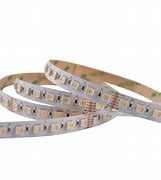IoT-Enabled Vision System for Detection of Tint Level

In a typical automotive system, such as cars, buses, and lorries, we use glass windows at many places. The purpose of the glass window provided at the backside is to provide clear visibility of vehicles that are approaching our vehicle. The glass window provided at the front side of the car (called windshield) gives a clear view of things ahead of our vehicle. The driver moderates the speed of the vehicle according to the objects seen through the windshield. At every row of passenger seats, depending on the type of the vehicle, glass windows are provided on either side. The purpose of these glass windows is to give visibility of the outside world to the passengers while traveling.
Literature Survey
Window tinting refers to the methods used to block certain levels of light from passing through the glass window of vehicles. Most of the window glasses in the vehicles are coated or treated in order to filter the harmful ultra-violet (UV) rays entering the vehicle. The window tinting has various other effects.
(1) Dark tinting will reduce the driver’s vision, particularly while driving at night.
(2) Tinting windows will distort the vision of aged people and people with problems with eyesight.
(3) If anyone wears polarized sunglasses, it will produce some visual patterns on the window.
(4) Over a period of time, tinting can even lead to bubbles, peel, or develop cracks that may bring down the value of a vehicle and it general look.
(5) Many vehicles come with window glasses that are engineered in such a way that in the event of an accident, they will “break away.” At times, the tinting material will prevent windows from breaking during accidents. This in turn can cause or even worsen injuries during accidents
Overview of the Proposed Methodology
shows the overview of the proposed windshield tint level detection system based on real-time vision. The input to our system is a live video captured through the surveillance camera. From the captured video, two frames are extracted one is the background image (taken when no vehicle is moving) and another one is the foreground image (taken when the vehicle is moving). Both the images have certain common properties such as image color, image position, image size, image type, and origin.
The images are initially preprocessed. The preprocessing includes filters, brightness and contrast equalization, and image conversion. Using the adaptive background subtraction method, the foreground object (moving vehicle) is only extracted. From this processed image, the region of interest (ROI), namely the windshield/window region, is extracted, and then this ROI is cropped from the original color image and is passed on to the tint level calculation module.
Three different techniques of tint detection were employed in the present work. If the tint level exceeds the prescribed limits, then the process switches over to license plate detection to uniquely identify the vehicle, and a ticket is issued, if necessary.





